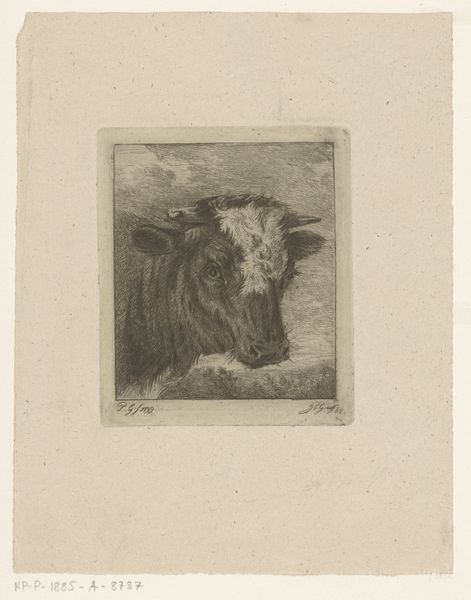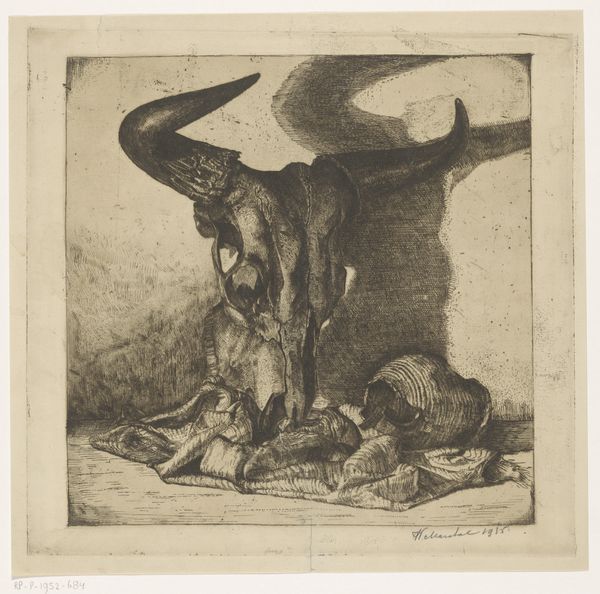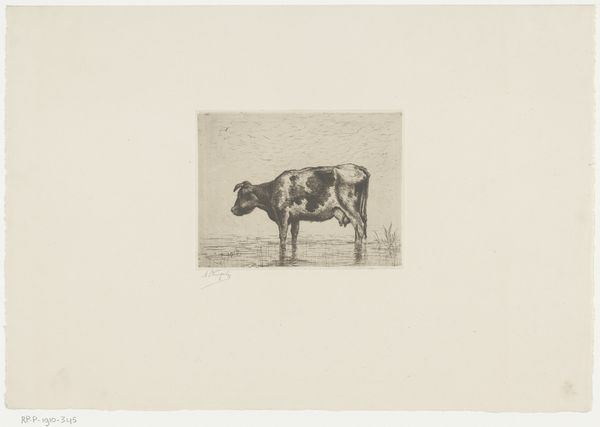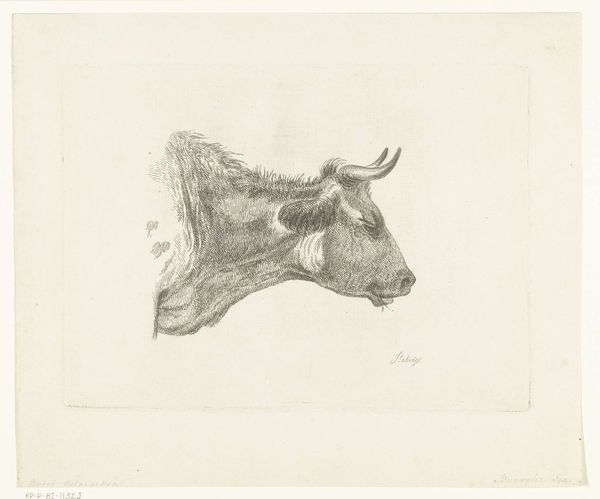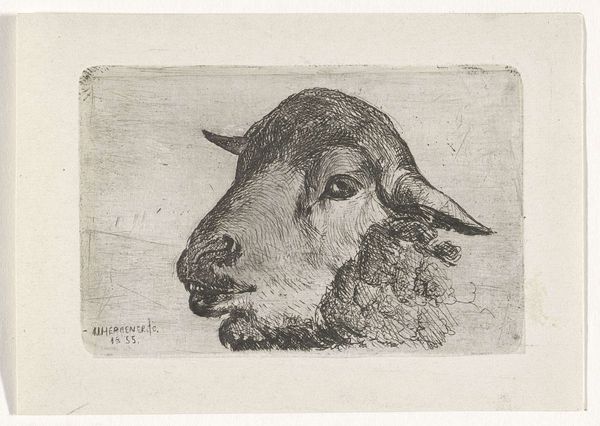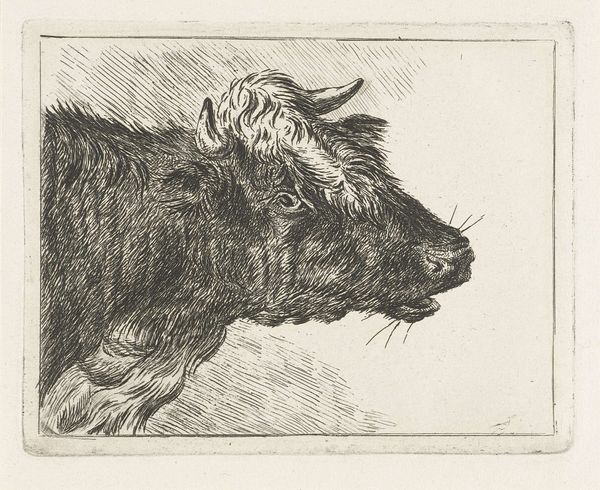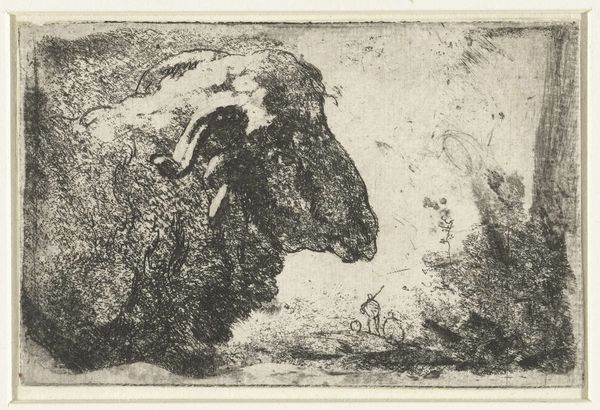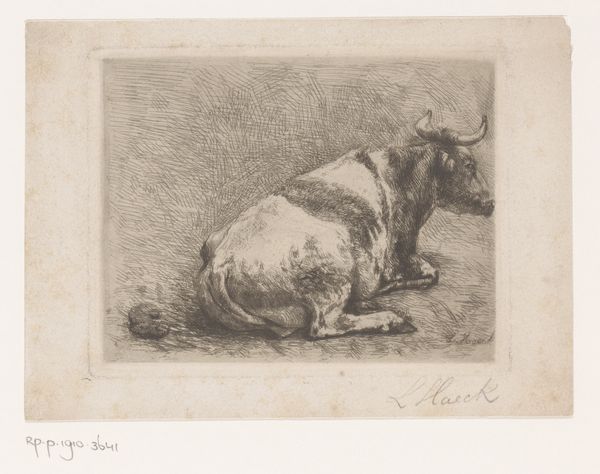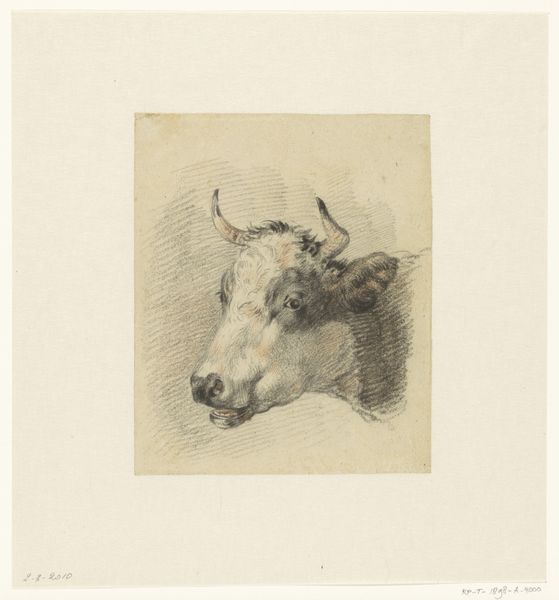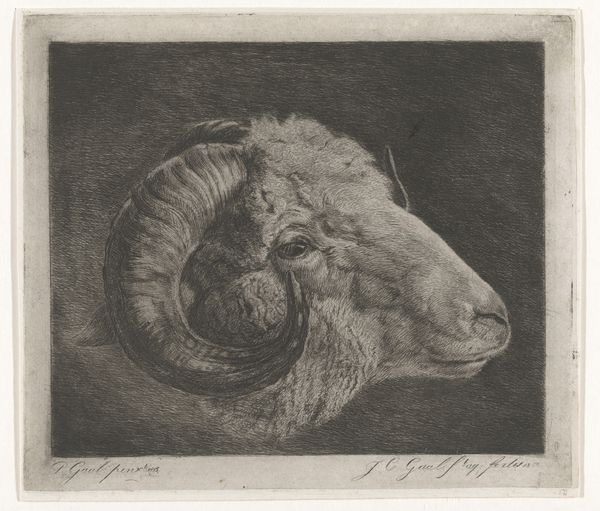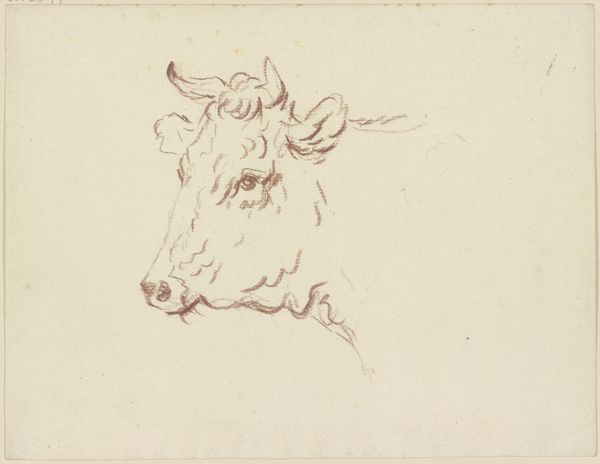
drawing, print, etching, paper, ink, engraving
#
portrait
#
pencil drawn
#
drawing
#
animal
# print
#
etching
#
old engraving style
#
paper
#
ink
#
pencil drawing
#
engraving
#
realism
Dimensions: height 170 mm, width 214 mm
Copyright: Rijks Museum: Open Domain
Curator: Welcome! Let’s consider "Head of a Bull", created by Jules Ferdinand Jacquemart in 1877 using etching, engraving, and ink on paper. What’s your initial impression? Editor: It strikes me as a very powerful image, a primal energy almost jumps off the page. The bull, though static, feels ready to charge, his bellow echoing in the stillness. I am instantly considering the archetype this beast represents, an enduring motif. Curator: Indeed. The bull is deeply symbolic. Its imagery appears across millennia, in various cultures. Here we can appreciate Jacquemart's depiction not merely as an animal portrait, but within the larger narrative of how animals often embody concepts like virility and strength in many masculine-centered narratives. Editor: Exactly! Think of the Minoan bull-leaping rituals, or the myth of Europa and the bull – these resonate here. Jacquemart employs such close hatching and careful etching to communicate texture; he is deliberately referencing the depth and long symbolic associations of the animal itself. Even now, ‘bull’ figures heavily in modern trading practices as well. Curator: Furthermore, it invites questions around exploitation and labor. Bulls have been historically exploited for agriculture. Their depiction here invites conversations around human relationships with nature, specifically farming and labour. Editor: I agree completely, you’re looking at the way we exploit. But even divorced from human context, his furrowed brow and tensed musculature speak volumes, referencing perhaps a larger primal anxiety in that late Victorian period, what happens when the beast inside comes loose. Curator: Very insightful! Looking closely, the seemingly simple portrait is heavy with layered, and often oppositional narratives concerning masculine roles. Editor: Indeed. This small etching isn't merely a pastoral scene. It evokes centuries of tradition and reflects how artists communicate cultural values. Thank you! Curator: Thank you. Analyzing this work collectively definitely enriches its potential meanings.
Comments
No comments
Be the first to comment and join the conversation on the ultimate creative platform.

